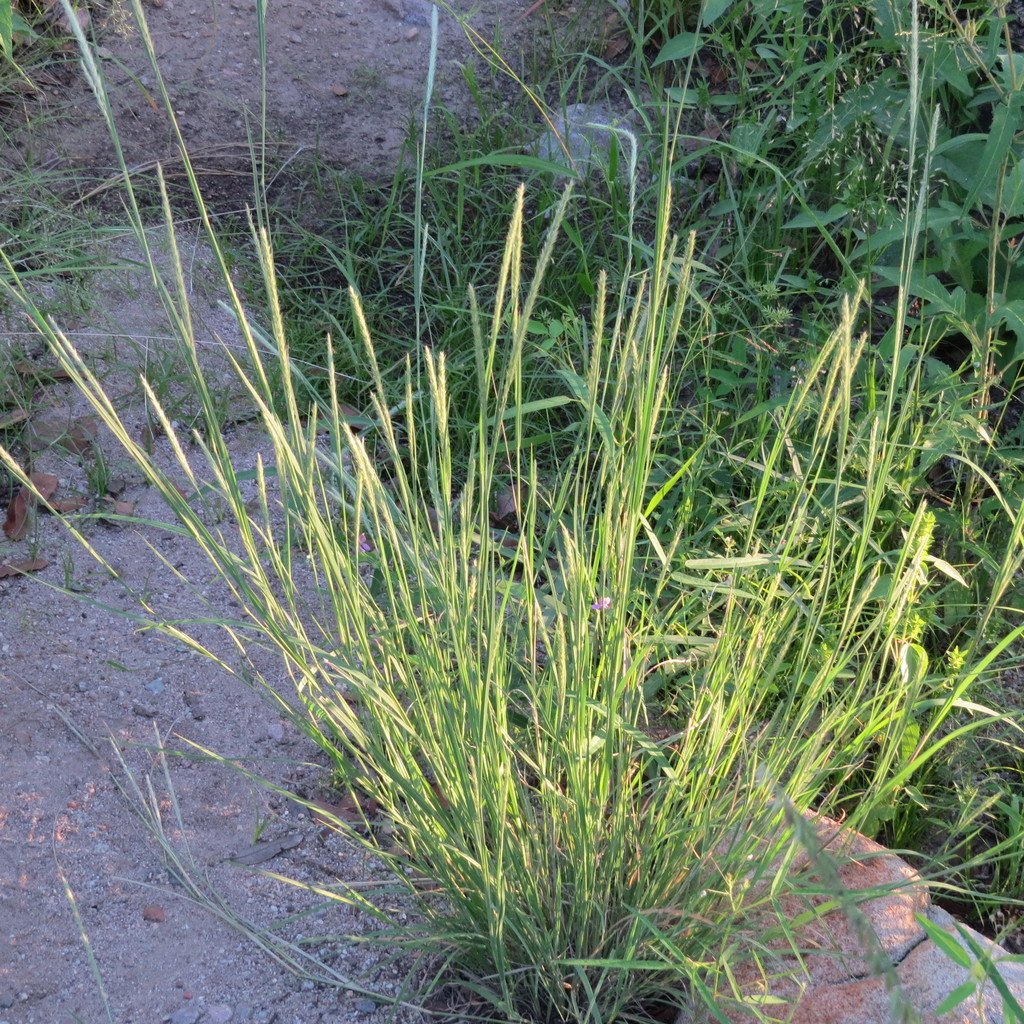Bristly Wolftail
Muhlenbergia alopecuroides
Family: Poaceae
This is a perennial mountain grass with a tufted habit. The erect stems have several nodes and grow from 1-1.5’ tall. Panicles appear July through October.
Distinguished by being an erect perennial bunchgrass, with leaves that are tipped with a small awn or bristle; and bristly spike-like inflorescences of single-flowered awned spikelets. Can be confused with Muhlenbergia wrightii which is similar, but that species grows at higher elevations.
Full sun best with irrigation. Can step outside irrigated locations in areas where water naturally collects.
Good to very good forage with moderate to high livestock palatability.
While grasses are generally used by many species of moths and butterflies, this species is especially attractive to the Edwards's Skipperling (Oarisma edwardsii).
This species is still often referred to as Lycurus setosus, though its most current taxonomy suggests it is a Muhlenbergia.
Photo by Max Licher, SEINET
Muhlenbergia alopecuroides on iNaturalist
The genus Muhlenbergia was named for Gotthilf Heinrich (Henry) Ernst Muhlenberg (1753-1815) who was American born but returned to his ancestral Germany for schooling and later returned to America. He was an ordained Lutheran minister but devoted his free time to the study of the botany. The species name, alopecuroides, comes from the Greek words ekos meaning "fox" and oura meaning "tail". It is used as a specific epithet in the binomial names of several plants to indicate that they resemble the genus Alopecurus, which is commonly known as foxtail grass. There are 180 species of Muhlenbergia with the greatest number native to the southwestern United States and Mexico; there are also native species in Canada, Central and South America and in Asia.
Found on rocky slopes and open mesas from 2,000- 10,000 ft. from southern California east to Oklahoma; south into central Mexico; disjunct in South America in Argentina.



